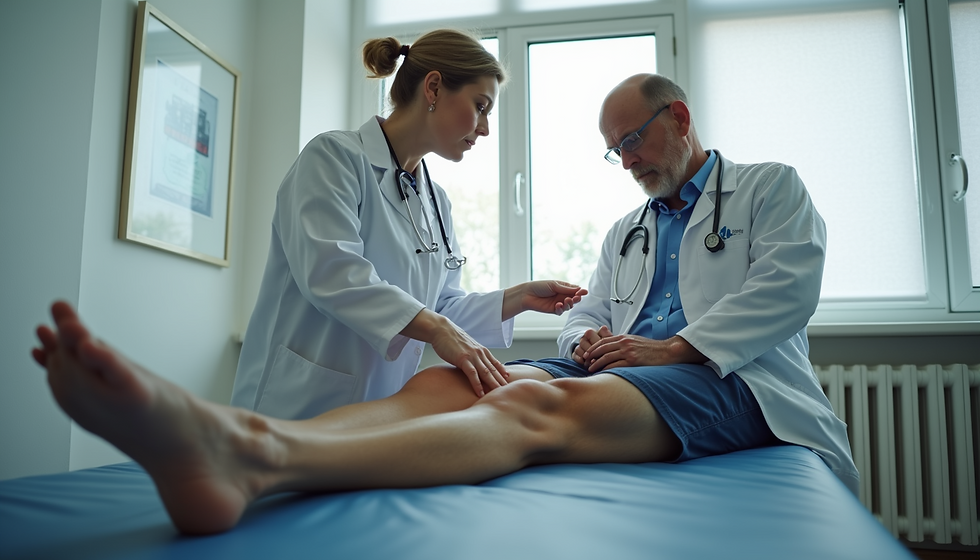Headaches!
- Hannah Foster-Middleton

- Feb 23, 2024
- 2 min read
Headaches are a common complaint but there are many different types with different symptoms for instance migraines, sinus, tension, cluster and cervicogenic (CGH), etc. A Cervicogenic headache presents as a one-sided pain that starts in the neck and is referred from the bony structures or soft tissues of the neck. It is a common chronic and recurrent headache that usually starts after neck movement and is usually accompanied by limited movement. Cervicogenic headaches can be successfully treated with physiotherapy due to the muscle and spinal impairment of the neck.
Unlike migraines and tension-type headaches, CGH originates from dysfunctional muscles and spinal joints in the upper neck. Symptoms include pain in the neck joints, stiffness, and tenderness in the neck muscles. Shoulder and arm pain may also be present. Compression of the upper three spinal nerves refers pain into the head causing headaches.
The condition can be diagnosed using manual examination by a highly qualified physiotherapist. Imaging is usually not sensitive enough for diagnosis of this condition. The manual exam will identify the range and quality of movement at each spinal segment feeling for resistance and reproduction of pain.
A common cause of dysfunction to the upper neck is whiplash injuries like those caused during a car accident or hitting your head during a fall for example and arthritis. Sometimes the injury will resolve on its own and sometimes will cause prolonged and repetitive headaches that require therapeutic intervention.
Physiotherapy treatment should be sought if headaches persist. Treatment, following a thorough examination and diagnosis will consist of the following:
· Pain management of the soft tissues at the top of the neck
This would consist of releasing muscle tension and trigger points in the muscles using techniques like dry needling, trigger point release, polychromatic light therapy, heat, soft tissue mobilization or active release techniques.
· Normalizing range of motion
The joints between the bones in your neck have independent movement and should move smoothly and without pain. Stiffness in these joints will limit how much you can turn your head. Treatment would consist of decompression therapy and spinal manipulation to restore normal movement to these joints and improve how you can turn your head. Decompression therapy is a sustained and gentle stretch of the neck that will help to separate the bones and relieve tension on the spinal nerves that pass between each joint. It is the compression of these nerves from your spine that refers pain into your head. Manipulation of the joints in your neck will restore their normal range reducing the sensation of stiffness.
· Rehabilitation
Pain changes the way we move our bodies and when we have prolonged pain and dysfunction we start to establish a pain “posture” where the shoulders round forward as does the head aggravating the original problem. Posture needs to be normalized with stretches and strengthening of the postural muscles once the pain has been managed and range restored. There is a comprehensive program for this that once learned in physiotherapy can be used for maintenance at home.
You do not need to suffer from repetitive headaches. There is a solution. Call your physiotherapist today!







Comments